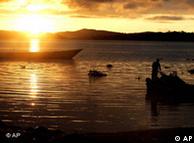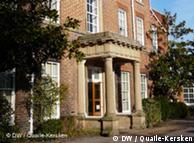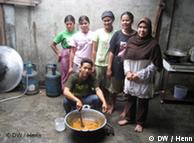The inhabited world seems to peter out at Noordhoek Beach, a five-mile strip of white sand bordered by verdant cliffs, on the Atlantic coast of the Cape Peninsula 15 miles southwest of Cape Town. At 4 o’clock in the afternoon, with a pale sun shining weakly through an overcast sky, a friend and I followed a trail on horseback through dunes and wetlands leading to the coast. A long-billed Hadeda ibis and a pair of Egyptian geese waded in a freshwater stream swollen with recent rains.
The horses broke into a trot, then a canter, as we hit the beach speckled with gnarled driftwood and great, squiggly strands of kelp. In the distance, a near-perpendicular cliff face soared high above the sea, its striated green flank cut by the fabled Chapman’s Peak Drive, one of the world’s most heart-stopping stretches of asphalt. The air was thick with seagulls, cormorants and black oystercatchers. We watched a huge seagull soar high in the air, a clam in its beak, and drop its prize on the sand; two dozen attempts later, it succeeded in breaking open the shell, and ripped into the clam’s flesh.
Farther on, I caught sight of a dark form moving in the sand; it was an injured seal in its death throes. “They wash up all the time,” our guide, Hope Flex, told us. “Nothing can be done for them.” The creature wagged its flippers, lay still, then lifted its head and flopped down again. I turned my horse away and continued down the beach.
There’s wildness to Cape Town — the big skies, the rugged canyons, the jagged outcroppings of sandstone and granite that rise over the icy South Atlantic at the tip of Africa. Penguins waddle across white-sand beaches, elands roam the dunes, hungry baboons swoop down from their shrinking forest habitat on unsuspecting suburbanites, ripping apart their cupboards and closets in a desperate search for sustenance.
Part Alaska, part Big Sur, but always African, Cape Town can overwhelm a visitor with its grand-scale landscapes and its feeling of remoteness. It’s an agoraphobic’s nightmare, this patch of wind-whipped scrubland and mountain at the bottom of the world, and a naturalist’s dream.
But there’s another side of Cape Town as well: the Dutch colonists who settled in the Constantia Valley 350 years ago were determined to tame nature, and they covered the fertile, sun-drenched basin with vineyards that still produce some of the world’s finest wines.
Beach communities like Kalk Bay, reminiscent of Massachusetts — a funky mix of tidy Edgartown and rough-edged New Bedford — hug the coast. Then there’s the urban poverty that most tourists, and most white Capetonians, seldom see, except when they pass by it on the way to and from Cape Town International Airport: the squatter camps of the Cape Flats, where tens of thousands of immigrants from impoverished rural areas dwell in shacks beside canals overflowing with raw sewage, and makeshift bars, or shabeens, fill with the alcoholic and the unemployed.
The city’s collisions of culture, class and geography can be both exhilarating and unsettling, as I discovered while I lived in Cape Town as a Newsweek correspondent between 2005 and 2007. What’s more, it’s all become very cheap to experience. The ouster of President Thabo Mbeki last September, along with continuing trouble in neighboring Zimbabwe and the worldwide economic crisis have pushed the South African rand to its lowest level in five years. The rate of exchange was 7 rand to the dollar when I left in March 2007; these days it’s around 10.
Even though high South African inflation has pushed up prices in rand, they have declined in dollars. A night in a double superior room in the summer high season at the Constantia, a boutique hotel in the Constantia Valley, for example, has risen in the past year from 3,100 rand to 3,400 rand, but in dollars it has declined from about $400 to $345.
It’s now possible to stay in a cheaper but still very good hotel room, rent a car, eat a couple of excellent meals and hike or mountain bike in the world’s most magnificent wilderness reserves, all for a total of $300 a day. For the budget-conscious outdoor-loving American traveler looking for a bargain in the recessionary era, Cape Town is hard to beat.
I arrived in Cape Town in mid-November, at the start of the Southern Hemisphere’s summer, and decided to splurge for the first two nights of my stay at the Constantia, on Cape Town’s historic wine route. Elegantly furnished suites laid out around lawns and bamboo gardens, breakfast on a patio facing the rugged Steenberg Mountains, a private mini-swimming pool in the tiled courtyard outside every room — it was easy to feel guilty about such shameless self indulgence, but I was paying only the equivalent of $250 a night at a temporary discounted rate, so I didn’t dwell on it. The Constantia was a luxurious and well-situated base from which to rediscover the city.
Early on my first afternoon in Cape Town, I set out for the Foodbarn in Noordhoek, a prominent example, I had been told, of the culinary revolution that Cape Town has undergone in recent years. I drove from the Constantia over Ou Kaapse Weg — Old Cape Road in Afrikaans — a two-lane ribbon that winds steeply through the Steenbergs. Like much of the Cape Peninsula, this treeless range of hills is blanketed with fynbos — the hard-leafed heathlike vegetation that evolved in isolation in this windswept, arid and fire-prone corner of the world.
After climbing through the rolling terrain to about 2,000 feet above False Bay, the road dipped toward Noordhoek, a rural beachside community that feels Californian — a bit like Topanga Canyon, a bit like Malibu.
The Foodbarn, which occupies a thatched-roof A-frame that was originally a farm store, was created two and a half years ago by Franck Dangereux, the Cannes-born former head chef of Constantia’s La Colombe, which was named the best restaurant in South Africa several times by the Business Day newspaper. Mr. Dangereux has turned the Foodbarn into the most talked-about bistro in the city, mixing Provençal, Moroccan, Middle Eastern and pan-Asian elements, but following the worldwide food trend of going local: he almost never shops for ingredients more than 30 miles beyond his Noordhoek home.
“I want to boost the Cape Town growers,” the bald, animated Mr. Dangereux told me when he joined me and my dining companion, Peter Bouckaert, a South Africa-based Human Rights Watch investigator, at our table in the sun-splashed cafe. (Mr. Dangereux breaks the rules during the summer oyster season, when he imports what he describes as “fat, greasy” mollusks from neighboring Namibia.) The Foodbarn’s prix-fixe menu that afternoon consisted of a crispy prawn and avocado salad garnished with minted baba ghanouj salsa, followed by grilled salmon on a bed of crushed Nicola potato, with cream of garlic and cinnamon oil, and an iced café au lait for dessert. Peter and I washed the meal down with a local sauvignon blanc. The total cost of a superb lunch for two: less than $50.
After two nights of self-indulgence at the Constantia, I moved a couple of miles north to the Bishops’ Court, a bed-and-breakfast on a quiet road in the exclusive southern suburb of Bishopscourt. Here, both the climate and the landscape change dramatically from the dry, Mediterranean-like Constantia Valley and the adjacent Steenberg Mountains.
The heavily forested eastern facade of Table Mountain attracts more rainfall than any other part of the Cape Peninsula, and the suburbs along the monolith’s lower flanks — Bishopscourt, Newlands, Claremont — are deep green and bursting with bougainvillea, frangipani, eucalyptus, date palms and other semitropical and tropical vegetation. The French doors of my room looked toward Kirstenbosch, the national botanical gardens, and, just beyond, the iconic massif of Table Mountain itself — its striated folds of sandstone turning purple, then gold, as they caught the first rays of the sun.
KIRSTENBOSCH, established in 1913 for the protection and study of southern Africa’s indigenous flora, exemplifies Cape Town’s juxtapositions of wildness and cultivation. Its Table Mountain backdrop, with a tangle of forest clinging to the rough sandstone face, exudes the raw power of nature, while its meticulously landscaped grounds reflect the hand of man.
I paid the entry fee — about $3 — and followed gravel and cobblestone paths, lined with occasional benches for contemplation, that wound past manicured lawns; ponds; gardens of protea, ericas, restios and other hard-leafed shrubs and plants unique to the Cape Peninsula; and lush groves of trees from across southern Africa, including yellow woods, common cabbages, wild almonds, wild cottons, and quinines. In the tranquillity of an early Sunday morning, the only sounds I heard were the calls of whippoorwills and the trickle of a natural spring. (The layers of porous sandstone that form the bedrock of the Cape Peninsula are perfect vessels for trapping groundwater.)
The paths through Kirstenbosch merge with hiking trails that climb steeply to the top of Table Mountain. But I had done the challenging daylong hike three years earlier while living in Cape Town, and I decided to pass. Instead, I devoted my energy to dining out. Lunch was at an old favorite: the River Café at Constantia Uitsig, a centuries-old vineyard in the heart of the valley. For dinner, I followed Frank Dangereux’s recommendation and headed to Bizerca, opened last year by Laurent and Cyrillia Deslandes, a Loire Valley-born chef, and his South African wife. It is one of many new high-end restaurants that are animating once-desolate corners of the city.
A friend and I arrived on Jetty Street near the waterfront after dark, driving past a sea of high-rise office complexes to a brightly lighted bistro that shone like a beacon amid sterile surroundings. A Johannesburg designer had remodeled the space, a former Bible-study center, as a kind of funky factory, with chocolate-and-vanilla-swirl concrete floors, steel-frame windows and a tangle of exposed aluminum ducts and pipes. The place was packed: the energy was palpable. We started the meal by sharing a delicate beet-root, goat cheese and beet-root sorbet salad followed by king prawns and pork bellies on a bed of sweet potato purée and chili jam. My main course was free-range chicken and spiced garbanzo beans, and dessert was a raspberry sorbet. With a bottle of local chenin blanc, the price of a dinner for two was $62.
I spent the next several days rediscovering familiar pleasures — a climb up Lion’s Head peak before sunset, the chili prawns at Toni’s, a Mozambican restaurant on Kloof Street in the city center — and discovering new ones. I hiked along deserted trails through meadows and pine forests at Silvermine, a part of Table Mountain National Park, watching as a dense mist rolled in from False Bay then making my way back to the parking lot on a cliffside path in a warm drizzle. I drank Castle beers and watched South African cricket with a friend at his local pub, the Foresters Arms in Newlands, a way station for travelers and their horses during the early days of the British-run Cape Colony.
On my last full day in Cape Town, I met Peter Bouckaert at his home in Simon’s Town, the southernmost town on the Cape Peninsula and home to a colony of African penguins (formerly known as jackass penguins because of their braying, mule-like call), for a day of lobster diving at the bottom of the world. I rented a wet suit, gloves and boots from a local dive shop for the equivalent of about $15, to insulate myself against the 60-degree South Atlantic. I paid another $7 or so for a fishing permit, which would allow me to take home four lobsters. Then we set out for the Cape of Good Hope.
Half an hour later we parked our Land Rover on the shoulder of a road overlooking the ocean. With gear-laden duffel bags balanced on our shoulders, Peter and I splashed through tidal pools, climbed over dunes, and dodged boulders strewn across sandy trails. A pale green blanket of beach grass and spiny shrubbery, speckled by purple irises, sloped gently upward to our right. To our left, the surf crashed against a curving, rocky beach.
It could have been Maine or Newfoundland were it not for the occasional reminder that this was Africa. A pair of blessboks, or antelopes, plodded across the dunes, gazing at us with doleful eyes. Three ostriches nibbled at tufts of beach grass.
Two miles up the deserted beach, Peter gestured toward clumps of olive-colored kelp bobbing just off shore. “This is the spot,” he said. I dumped my bag on a pile of rocks, squeezed into my hooded wet suit and slid off a barnacle-covered boulder, wincing as the frigid water seeped between my body and the neoprene. I dived beneath the surface, and combed through the tangle of seaweed where the crustaceans usually lurk. Though my body warmed up quickly, the water numbed my hands and seeped into my boots; more water gushed into my ill-fitting mask. I cleared my snorkel and dived again, peering into the murky depths.
Minutes later I surfaced and saw Peter swimming toward the rocks; he climbed out of the water and ripped off his mask in frustration. “I can’t see a thing,” he said. Nor could I. Swirling sediments stirred up by recent storms, had left us groping like blind men for our evening’s anticipated supper. We clung to the rocks, battered by the waves, and watched a pair of surfers ride a breaker a hundred yards off shore.
The African sun dipped low, glinting off the Atlantic with blinding intensity. I lay back on the beach and basked in the warmth of the fading day as a pair of cormorants dived and weaved. Then we hoisted our duffel bags, and empty-handed but content, we began the long hike back to our car.
GOOD HOPE, GOOD MEALS
HOW TO GET THERE
Cape Town International Airport is served by several international carriers. A recent online search found round-trip fares from $1,135 between Kennedy Airport and Cape Town, involving at least one stop. Rental cars are available at the airport. The lowest daily rate from Hertz, for a small economy car, is currently about 270 rand, about $27 at 9.85 rand to the dollar.
WHERE TO STAY
The Constantia (Spaanschemat River Road, Constantia; 27-21-794-6561; www.theconstantia.com), a luxury boutique hotel, is in the heart of Constantia’s historic wine route. Its huge suites, with a private dipping pool, and a double room start at 3,400 rand in the high season, October through April, and 2,200 rand in the low season, May through September.
The Bishops’ Court (18 Upper Hillwood Avenue, Bishopscourt; 27-21-794-6561; www.thebishopscourt.com), which is owned by the same company, the Last Word, has smaller rooms starting at 2,800 rand in the high season and 2,000 rand in the low season. Each room looks out on one of the best views in Cape Town, the verdant east face of Table Mountain.
La Villa Belle Ombre (16 Belle Ombre Road; 27-21-424-2727; www.villabelleombre.com) is a charming bed-and-breakfast in a Victorian mansion in the Tamboerskloof neighborhood of Cape Town. In high season, rooms for two are 580 rand to 1,020 rand.
WHERE TO EAT
The Foodbarn (Noordhoek Farm Village, Village Lane, Noordhoek; 27-21-789-1390; www.thefoodbarn.co.za) is Franck Dangereux’s wildly popular bistro just down the road from one of Cape Town’s most beautiful beaches. The converted farm store has an airy, bright interior and perhaps the best French-Asian cooking in the area; lunch for two costs about 450 rand. A three-course prix-fixe lunch with a carafe of wine is 195 rand.
Bizerca Bistro (Jetty Street, Foreshore; 27-21-418-0001; www.bizerca.com), a hip French-Asian bistro set in a former Bible study center near Cape Town Harbor, is sparking a revival of an area that had been a ghost town at night; dinner for two, with drinks, costs about 550 rand.
Jardine Restaurant (185 Bree Street, Cape Town; 27-21-424-5640; www.jardineonbree.co.za) is the other French bistro that’s got people talking in Cape Town. Near Long Street in the city’s liveliest night-life district, it has a drab interior but good cuisine. Dinner for two, with drinks and a bottle of wine, costs about 800 rand.
River Café (Spanschemat River Road, Constantia; 27-21-794-3010), at the Constantia Uitsig vineyard in the heart the valley, is a picturesque lunch spot with lots of outdoor seating and a laid-back atmosphere; lunch for two, with a bottle of the vineyard’s excellent wine, is about 450 rand.
WHAT TO DO
Imhoff Equestrian Center (27-82-774-1191; www.horseriding.co.za) in Kommetjie, just down the coast from Noordhoek, offers horseback rides three times a day through wetlands and along Noordhoek Beach, with an experienced guide. The rides, which last two hours, cost 300 rand. The best time to go is at 5 p.m. in summer (4 p.m. in winter), when these rides are 350 rand, so that you can catch sunset on the Atlantic.
The Cape of Good Hope, the best area on the Cape Peninsula for lobster diving, is at the southern end of Table Mountain National Park (www.sanparks.org/parks/table_mountain), an extensive wilderness area that encompasses the Table Mountain range and extends from Cape Town’s Signal Hill to the southernmost tip of Africa. The Cape of Good Hope entrance to the park offers the best access to the lobster-rich kelp beds of the cold Atlantic; it’s a short drive south from Simon’s Town on the M4 highway. This part of the park is open from 6 a.m. until 6 p.m. in the summer season, October to March.
Kirstenbosch National Botanical Garden, (Rhodes Drive, Newlands; 27-21-799-8783; www.sanbi.org/frames/kirstfram.htm) is also part of the Table Mountain National Park network. Founded in 1913, the garden spreads across 1,300 acres on the eastern slope of Table Mountain. It’s open from 8 a.m. to 7 p.m. September through March and to 6 p.m. otherwise. The entrance fee is 32 rand; 10 rand for children 6 to 17.
JOSHUA HAMMER is a former Newsweek bureau chief and correspondent at large in Africa and the Middle East. His next book, the story of a colonial-era uprising in German southwest Africa, will be published in 2010.









